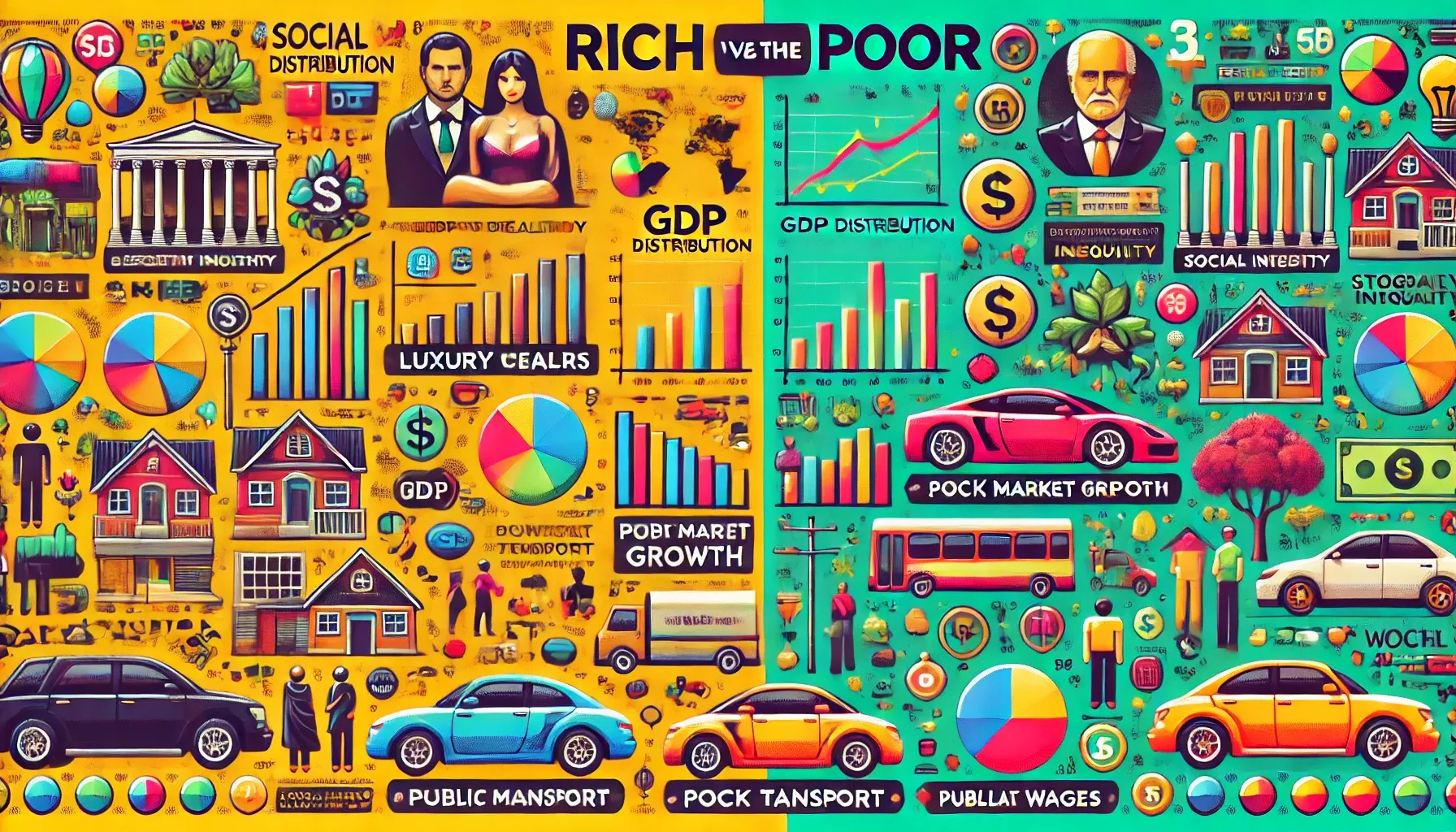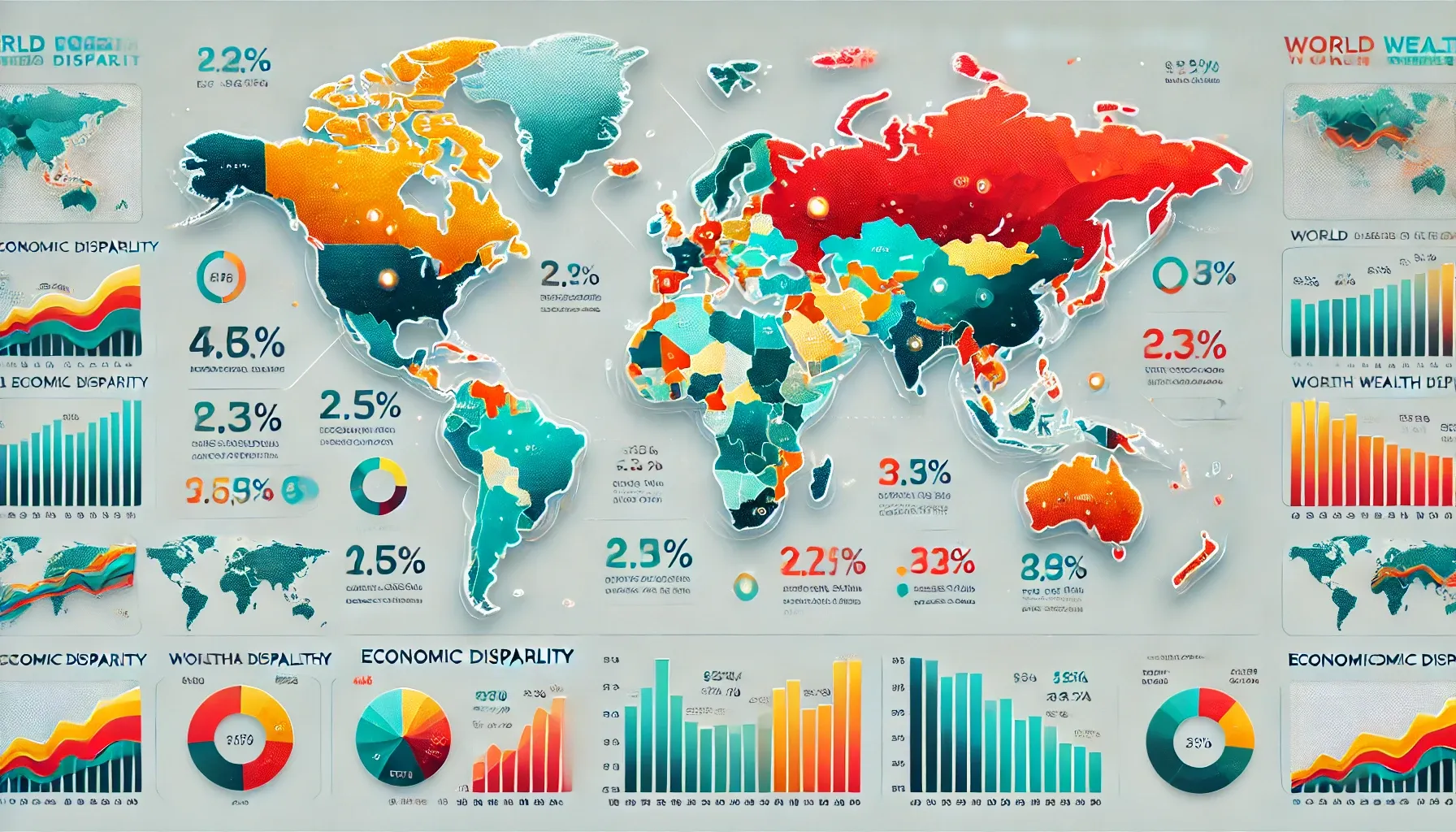Why have small countries surpassed giants in terms of quality of life?

- Why can small countries compete with economic giants?
- What are the reasons for economic inequality between countries in the world?
Introduction to gross domestic product
If we look at a country's Gross Domestic Product (GDP), which is the total value of all the goods and services produced during the year, we find that the major powers with the highest levels of wealth are the United States, China, Japan and Germany. But an interesting question arises: how are small countries like Singapore or Luxembourg able to compete with such economic giants?
GDP per capita and standard of living
To gain a more accurate understanding of the standard of living, it is worth dividing the GDP by the total population. This indicator, known as GDP per capita, as well as its changes over time, provides a deeper insight into the living conditions of an individual and whether this level is improving over time or, on the contrary, declining.
Purchasing power parity
On the other hand, the equivalent of the same amount of money may provide different amounts of goods depending on the country. This is because in some regions, basic necessities such as food, clothing, housing and medical services may be much cheaper. It is for this reason that when comparing GDP per capita in different states, it is important to considerpurchasing power parity.
- Adjustment of GDP considering the price level and inflationary processes in a specific economy.
Nuances of adjustment
However, such an adjustment can itself be complex. For example, many countries act as tax havens, which means that capitals originally created in other countries can artificially increase their GDP through various financial and legal mechanisms. Such investments usually have no direct impact on the financial situation of local residents and do not increase their welfare.
Differences in purchasing power
Comparing the differences in purchasing power, it can be observed that among the ten poorest countries in the world, the average income per capita is only about 1,350 dollars a year. Meanwhile, in the ten richest countries, this figure reaches approximately 100,000 dollars.
- The leading positions among the richest countries are occupied by European states.
- Some regions in Asia, such as Macau and Hong Kong, also feature prominently.
- Despite being governed by China, these regions have almost independent economies.
Financial success in Europe
However, not every European country has achieved a comparable level of financial success. Among the poorest in the region are Kosovo, Moldova and Albania. Nevertheless, even in these countries, living standards are significantly higher than in a number of African or Asian countries experiencing serious economic difficulties.
Conclusion
The richest nation in the world is recognized as the small state of Luxembourg, while the USA ranks only ninth in this rating. In contrast, the poorest country is Burundi, which is in 192nd place. The difference in GDP per capita between this small European nation (with an area of 2,586 square kilometers) and Burundi (with an area of 27,830 square kilometers) vividly illustrates the gap in the development of the social and economic spheres.
The unique difference in the economic situation of the various countries can be observed through the gross domestic product per capita, which is 165 times higher in Luxembourg than in Burundi. It is noteworthy that the level of purchasing power of a Luxembourger is equivalent to the total GDP per capita of the 47 lowest performing countries.
Economically developing countries
Despite the fact that purchasing power in the United States is quite high, there are developing economies that have managed to surpass it. A notable example is the United Arab Emirates and Qatar, which confidently occupy the top positions in the global rankings. Kazakhstan, ranked 59th in terms of living standards, has managed to surpass Russia, which is in 60th place, with a difference in purchasing power per capita of $489 per year.
The state of the post-Soviet countries
When it comes to the countries of the post-Soviet space, the residents of the Baltic states, including Latvia, Lithuania, and Estonia, boast the highest wealth.
29 September
9 October 2024
9 October 2024

Countries with high GDP per capita
There are several countries that hold top positions in the global ranking for GDP per capita based on purchasing power parity. Here are some of them along with their respective figures:
- Luxembourg- $140,694.
- Singapore— 131,580 dollars
- Ireland- $124,596.
- Qatar— 112,789 dollars
- Macau(Special Administrative Region of China) - 85,611 dollars
- Switzerland— 84,658 dollars
- United Arab Emirates— 78,255 dollars
- Norway- $77,808.
- United States of America— 76,027 dollars
- Brunei Darussalam- $74,953.
- Hong KongSpecial Administrative Region of China — $70,448
- San Marino- 70,139 dollars.
- Denmark— 69,273 dollars
- Taiwan (province of China) — 68,730 dollars
Other countries in the ranking
Other countries on the list may include the Netherlands, Austria, Iceland, and Andorra and Germany with varying levels of gross domestic product per capita.
Economic inequality
It is also worth noting that the top 100 includes countries with lower indicators, such as Bulgaria, Mexico, and Brazil. This wide range in living standards and purchasing power highlights the existing economic inequality, which remains a serious issue for the global economy. Analyzing data based on gross domestic product with purchasing power parity allows for a deeper understanding of how economic resources are distributed around the world and which countries are leaders in wealth and quality of life.

Conclusion
Concluding our discussion on gross domestic product and living standards in different countries, I have come to important conclusions. Comparisons of GDP and living standards cannot be based only on raw data such as the total amount of goods and services produced. It is important to consider the context and realities in which each economy exists.
Economic efficiency of small countries
Modestly sized countries such as Luxembourg and Singapore demonstrate how good economic management, investment in technology, education and innovation can lead to high levels of GDP per capita. This emphasizes that wealth does not always depend on territorial size or natural resources, but rather on:
- Strategic planning
- Efficient use of available resources
Difference in purchasing power
Additionally, it is important to consider the difference in purchasing power between regions. We see that the same amount of money can buy completely different volumes of goods and services in different countries. Therefore, for a more accurate understanding of the standard of living, it is important to:
- Adjust purchasing power parity data
Discrepancies in the standard of living
Even among countries with high GDP, there are clear disparities in the standard of living. Italy and Japan may be promising from an economic standpoint, but other factors must also be considered, such as:
- Income inequality
- Access to quality services
Result
In conclusion, my goal was to show that economic statistics are just a tool. They require proper interpretation and understanding. We must not lose sight of the human aspect, as our perception of wealth and well-being depends on people's lives. The global economy is multifaceted and complex, and only a deep analysis can provide us with a complete picture of reality.
Comment
Popular Posts
29 September
350
9 October 2024
9935
9 October 2024
1485
Popular Offers

Subscribe to the newsletter from Hatamatata.com!
Subscribe to the newsletter from Hatamatata.com!
I agree to the processing of personal data and confidentiality rules of Hatamatata











